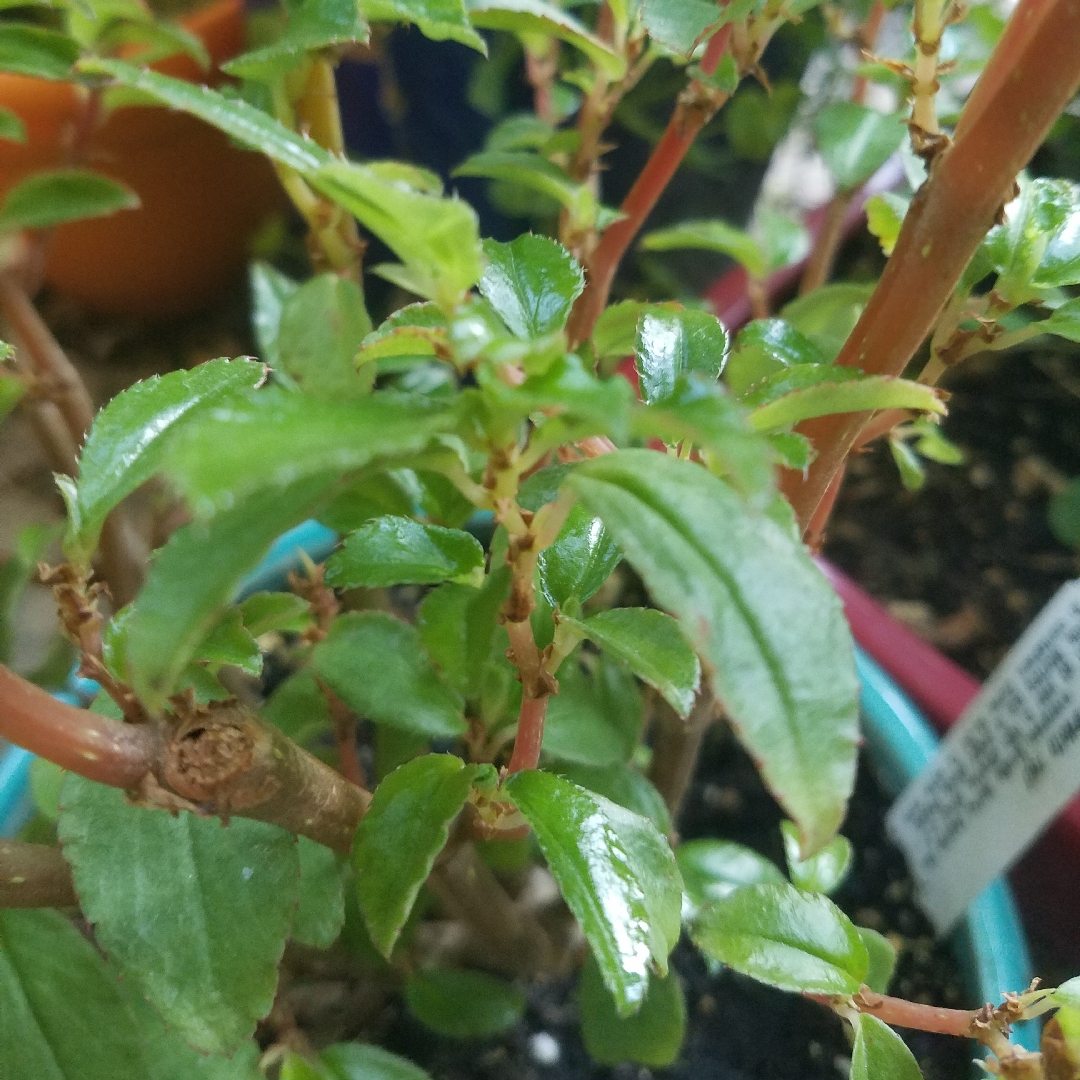
Begonia foliosa var. miniata
Fuchsia Flowered Begonia
Begonia foliosa has slender stems and toothed, shiny, mid-green leaves. Produces fuchsia-like, pink to red flowers, to 1 1/4" across most of the year. Grows to about 80cm tall x 50cm wide. It is probably a of Begonia fuchsioides as the species actually has bright red flowers. Plant in bright shade and water regularly.
Contributed by @jjjj
-
Partial shade
-
Occasional watering
-
Not Frost hardy
-
Moist and free draining
Common name
Fuchsia Flowered Begonia
Latin name
Begonia foliosa var. miniata
type
Houseplant
family
Begoniaceae
ph
5.5 - 7.5 Acid - Neutral
Plant & bloom calendar
-
Best time to plant
full grown dimensions
 0.50 M
0.80 M
0.50 M
0.80 M
Begonia foliosa var. miniata
Begonia foliosa has slender stems and toothed, shiny, mid-green leaves. Produces fuchsia-like, pink to red flowers, to 1 1/4" across most of the year. Grows to about 80cm tall x 50cm wide. It is probably a of Begonia fuchsioides as the species actually has bright red flowers. Plant in bright shade and water regularly.
Planting
From Early Spring TO Early Spring
All begonias do best in neutral soils or compost and most prefer to be sited in partial shade. When first planting young plants, it is worth removing any early flower buds as this will allow the plant to reach its full size as quickly as possible. Rhizomatous begonias will grow in all the various types of pots. Many can even be grown as epiphytes using various methods such as on boards with a small amount of mix covered with spagnum moss. Most rhizomatous begonias do best in shallow pots or bowls when using plastic pots. If you encounter difficulties growing this type of begonia using plastic pots, you may do better using clay azalea pots or clay bowls. These pots are more expensive and heavier but nearly all rhizomatous begonias will do well in them. Rhizomatous begonias will also do very well in wooden pots or moss covered baskets.
Propagation by division
From Early Spring TO Early Summer
For small rhizomatous types, divide the rhizome and use root pieces
Propagating by leaf cuttings
From Early Summer TO Mid Summer
A single leaf can produce several young plants. Remove a healthy leaf, and, use a clean, sharp knife, to cut it into postage-stamp sized pieces, with each piece having a vein down its length. Stand leaf pieces upright in pots of compost ensuring that the cut vein is in contact with the compost. Water, to settle the compost around the cuttings, then place the pot in a clear polythene bag, and put it in a warm, light position, until the cutting has taken root and produced shoots (this is usually several months). When large enough to handle, pot on.









